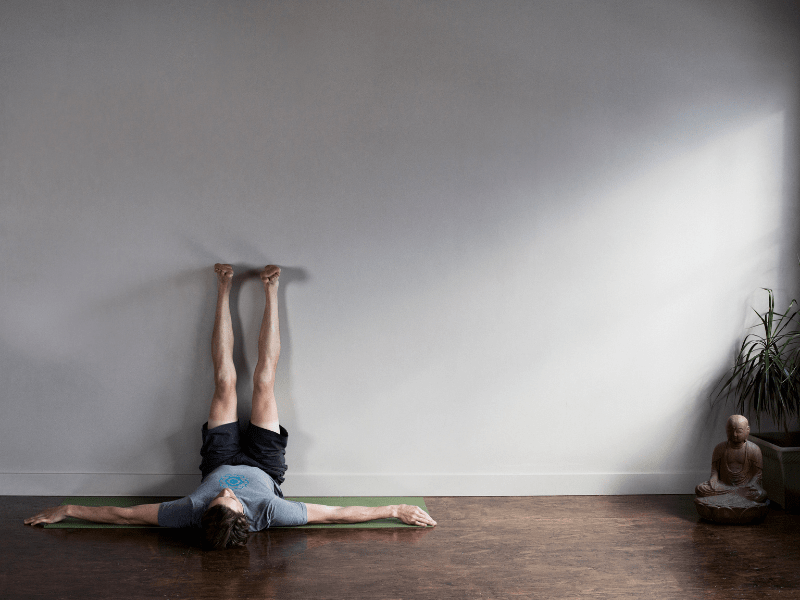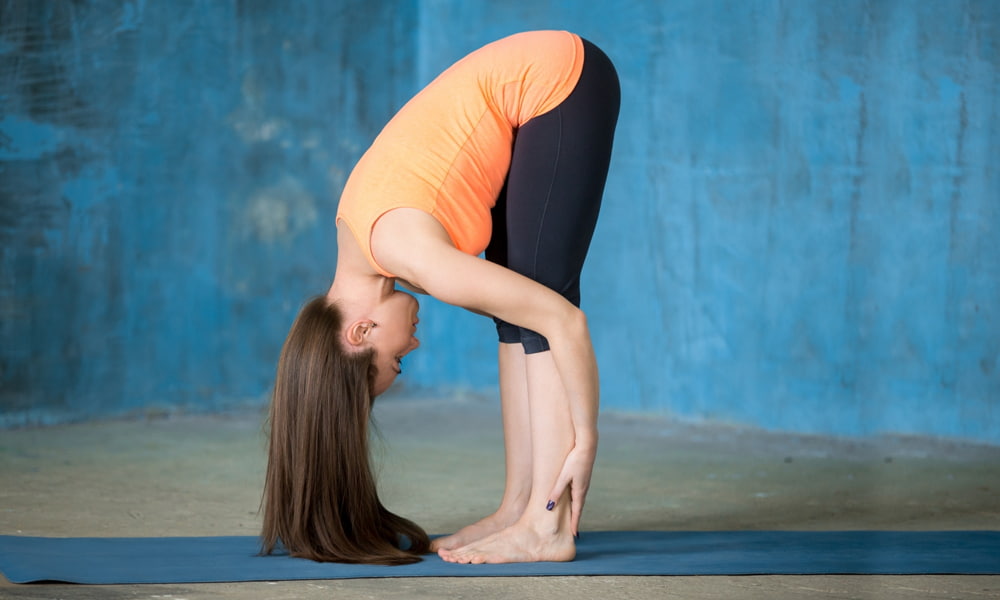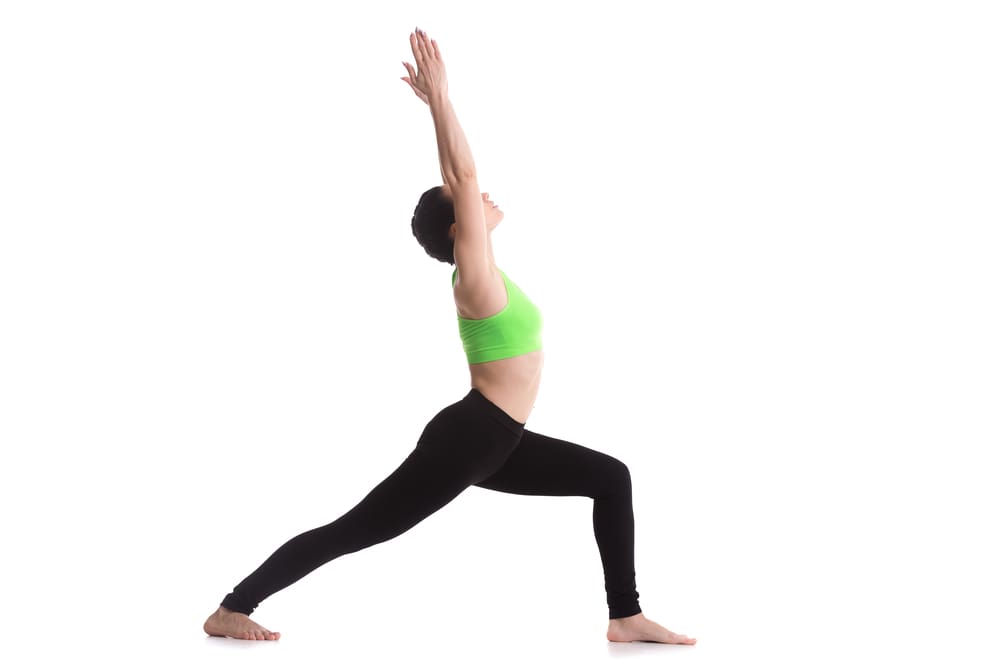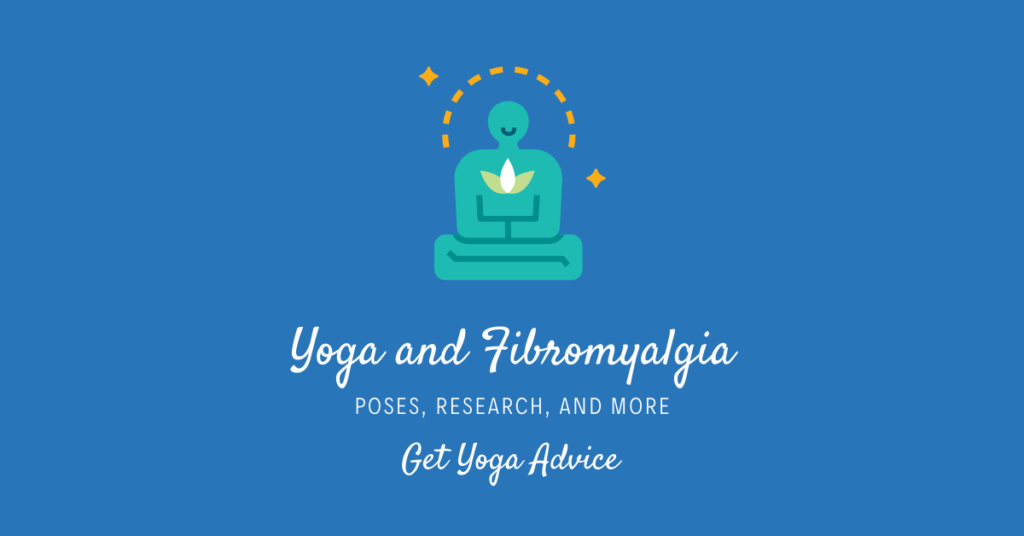Yoga, a mind and body practice with over 5000 years of history and practice, has gained popularity over the last few decades. Scientific evidence suggests that yoga may have the ability to alleviate some of the pain associated with fibromyalgia.
Yoga studios are being set up all over the country in even the smallest towns, making access to yoga easier than ever. It’s hard to ignore the benefits, particularly when you are suffering from fibromyalgia’s chronic pain.
- Fibromyalgia Symptoms
- What Causes Fibromyalgia
- Managing Fibromyalgia
- Yoga Practice
- 8 Yoga Poses for Fibromyalgia
- What Makes Yoga an Effective Alternative Therapy for Fibromyalgia?
- Does Yoga Have Healing Properties for People with Fibromyalgia?
- How Often Should I Practice Yoga?
- Final Word on Yoga and Fibromyalgia
Contents
- 1 Fibromyalgia Symptoms
- 2 What Causes Fibromyalgia
- 3 Managing Fibromyalgia
- 4 Yoga Practice
- 5 8 Yoga Poses for Fibromyalgia
- 6 What Makes Yoga an Effective Alternative Therapy for Fibromyalgia?
- 7 Does Yoga Have Healing Properties for People with Fibromyalgia?
- 8 How Often Should I Practice Yoga?
- 9 Final Word on Yoga and Fibromyalgia
Fibromyalgia Symptoms
Fibromyalgia is a medical disorder that affects between 11 to 15 million Americans. This musculoskeletal condition causes widespread chronic pain. Symptoms include muscle pain, joint pain, fatigue, sleep disturbances, and chronic headaches, to name a few.
Those who suffer from fibromyalgia experience chronic tension in the upper back, shoulders, and neck.
Diagnosing a patient with fibromyalgia poses some difficulty. At present, there is no process to determine whether or not the pain you feel is due to fibromyalgia. A history of widespread pain lasting three months or longer is one of the criteria that must be met.
What Causes Fibromyalgia
The cause of fibromyalgia is unknown, but studies suggest that most sufferers have an increased reactivity of pain-sensitive nerve cells. This can be caused by genetics, gluten sensitivity, stress, or trauma.
Managing Fibromyalgia
Once a patient has received a diagnosis of fibromyalgia, treatment varies from individual to individual, depending on their symptoms. The more successful treatments for fibromyalgia include a combination of medication and physical exercise.
A recent study from Oregon Health and Science University determined that people with fibromyalgia who practiced yoga noticed a decrease in some symptoms, including pain, fatigue, poor sleep, depression, and anxiety.
The reduction in each symptom was significant enough that the people living with fibromyalgia noted improved daily functioning due to daily yoga practice.
Yoga Practice
Exercise can be very challenging for people with fibromyalgia. Chronic pain can make it feel impossible to move, let alone be active. Restorative yoga and its gentle practice provide fibromyalgia patients with pain relief and breathing exercises to minimize discomfort.
In addition to providing pain relief, yoga calms the mind and body. For many who have fibromyalgia, calming of the mind has an implicit impact on their ability to function in daily life.
8 Yoga Poses for Fibromyalgia
1. Child’s Pose
One of the easiest yoga poses is Child’s Pose. This pose lengthens and stretches the spine and helps to relieve neck and lower back pain. To perform Child’s Pose:
- Begin by kneeling on your yoga mat.
- Next, bring your big toes together until they touch and sit on your heels—separate your knees about as wide as your hips.
- Take a big exhale and lay your torso down so that it is resting on your thighs.
- Lay your arms, palms up, beside your torso, and rest your forehead on the floor.
- Spend this time focusing on your breath as you round your back.
- For an added spine stretch, reach your arms forward, keeping the palms of your hands on the floor.
- Hold this pose only for as long as it feels comfortable.
2. Legs Up The Wall

This gentle pose works with gravity to reduce swelling and fatigue in the legs. It does not require any bending or balancing, which can be challenging for people with fibromyalgia.
In this position, your hips and legs’ muscles stretch and relax as the weight of standing is eliminated. The increased blood flow to the brain offers relief from stress and fatigue, two common fibromyalgia symptoms. To perform this yoga position:
- Lay on the floor on your side, perpendicular to the wall.
- Your body will be in an ‘L’ position with your legs against the wall.
- Slide your legs up the wall as you roll from your side to rest on your back.
- Take your arms out to your sides.
- Remain in this position only for as long as you feel comfortable.
3. Mountain Pose
This pose looks simple enough but has the ability to reduce your stress and lengthen your spine. Grounding your feet sends a signal to your muscles to relax as the balance is shared between each leg. To perform Mountain Pose:
- Stand with your toes touching, heels slightly apart.
- Shift your weight back and forth and side to side until your weight is balanced evenly.
- Allow your arms to hang beside your torso as you elongate your neck to lengthen your spine.
- Now, relax your shoulders, allowing them to drop.
4. Standing Forward Bend

While the idea of bending over can be very overwhelming for someone who has fibromyalgia, this yoga pose is very calming and helps open the back of your body. Standing Forward Bend also promises to soothe your mind. To perform this yoga pose:
- Begin in Mountain Pose with your hands placed on your hips.
- As you exhale, bend forward from your hips.
- Next, cross your forearms and hold your elbows, and allow your head to hang.
- With each inhale, lift your torso slightly.
- On the exhale, allow your torso to release deeper into the bend.
- If you feel you can rest your palms on the floor, or hold the backs of your ankles, as your body moves deeper into the pose.
5. Cobra
The chronic pain of fibromyalgia can be alleviated with this pose. Cobra pose helps strengthen the spine while stretching the chest, lungs, shoulders, and abdomen. Stimulation of the abdominal organs helps to relieve stress and fatigue.
To perform this pose:
- Lie on the floor on your front with your legs stretched long.
- Next, put your hands under your shoulders and spread your fingers out, elbows tucked in.
- The tops of your feet and thighs should be pressed firmly into the ground as you begin to straighten your arms.
For some fibromyalgia patients, lifting the body will not be an option. Laying on the ground with hands under your shoulders will be the extent of this pose.
- If your level of pain permits more movement, continue straightening your arms.
- Only lift as far as your body will allow you.
- If you experience back pain, you are bending too far.
- Hold this position for 10 to 15 seconds.
- Bend your elbows and slowly lower your upper body back to the floor.
6. Warrior 1

This pose will help to strengthen your muscles. People with Fibromyalgia have experienced a reduction in overall pain when muscle strength is improved. Strong muscles help to improve blood flow.
Warrior 1 strengthens the big muscles of the legs as well as the back and arms. To perform this traditional pose:
- Begin by starting in Mountain Pose.
- Separate your feet to the front and back so that they are about four feet apart.
- Keep your front foot pointing forward.
- Turn your back foot out to approximately 45 degrees.
- Raise your arms alongside your ears so that they remain parallel to one another.
- Plant your left heel into the floor and begin to bend your right knee forward.
- Reach up through your arms to help open your rib cage.
- Hold this pose for 30 seconds and then step back into Mountain Pose.
- Repeat on the other side.
7. Bounded Angle Pose
Despite the passive nature of this posture, Bounded Angle Pose promises to help relieve mild depression, anxiety, and fatigue, three of the most common symptoms of fibromyalgia.
Abdominal organs are stimulated as the pose stretches the inner thighs, groin, and knees. To begin with:
- Sit with your legs straight out in front of you.
- Exhale as you bend your knees and pull your heels towards your pelvis.
- Next, allow your knees to drop to the sides as you press the soles of your feet together.
- Place your hands around your ankles.
- With each exhale, allow your knees to drop closer to the floor.
- Remain in this pose for at least a minute.
8. Savasana
Traditional yoga practice always finishes with this pose. Savasana quiets the mind and relaxes the body.
This posture does not require enduring any discomfort that might accompany bending or stretching for a patient with fibromyalgia. In fact, Savasana allows your muscles and organs to relax as you inhale and exhale.
To perform Savasana:
- Simply lie down on the floor.
- Reach your arms to the ceiling, perpendicular to your body, and rock from side to side to stretch out your back and open your rib cage.
- Allow your arms to drop to the floor beside your torso, palms open to the ceiling.
- As you lie in Savasana, try to relax your tongue, forehead, the bridge of your nose, and even your brain.
- Now close your eyes, focusing only on your breath.
- Remain in this position only for as long as you are comfortable.
If you’re looking to modify any of these poses to make them more or less intense, Yoga Journal is an excellent resource with visuals to show how each pose should look. This is a great place to start if you’re interested in adding additional poses to your daily practice.
What Makes Yoga an Effective Alternative Therapy for Fibromyalgia?
Treatment of fibromyalgia is different for each patient. Medical professionals suggest a combination of medication and exercise and a shift in mindset to help manage the symptoms of fibromyalgia, especially the chronic pain associated with the diagnosis.
Incorporating yoga satisfies two categories of treatment. It is a form of low intensity and low impact exercise and is also a form of meditation.
The patterned breathing exercises provide people living with fibromyalgia with relief from stress and anxiety and improved mental health. These findings are backed up by scientific evidence. Patients who incorporated yoga into their daily lives reported an overall improvement in their well-being.
Does Yoga Have Healing Properties for People with Fibromyalgia?
Unfortunately, there is no cure for fibromyalgia. Yoga, as an alternative therapy, will not heal your body from this chronic illness.
It will however help patients manage the symptoms associated with fibromyalgia, including chronic pain, depression, sleep disturbances, fatigue, and headaches.
Introducing yoga into your daily routine will provide some pain management and strengthen your muscles, which will improve overall blood flow.
How Often Should I Practice Yoga?
The amount of yoga practice required will vary from patient to patient. Involving one or all eight of the yoga poses suggested in your daily routine can make a considerable difference in your pain management and general mental health.
The idea of moving can be overwhelming for many sufferers of fibromyalgia. Often, the relief felt during and after a simple yoga practice has lasting effects on the remainder of your day.
Studies have also found that daily practice may prevent sudden flare-ups or fibromyalgia attacks that affect many who suffer from this chronic illness.
Final Word on Yoga and Fibromyalgia
Receiving a diagnosis of fibromyalgia can be confusing and upsetting. The pain associated with this chronic illness can be unbearable and significantly impact on your quality of life.
With no clear understanding of why some people get fibromyalgia and no successful treatment or cure method, doctors have determined that the best approach to manage fibromyalgia is a combination of medication and exercise.
The low impact and low-intensity nature of yoga make it a perfect form of exercise for fibromyalgia. Not only does yoga increase your blood flow and strengthen your muscles, but it also helps to release the tension in the upper back, shoulders, and neck.
Yoga incorporates breathing exercises, which, combined with gentle stretching and postures, reduces stress and anxiety and provides some improvement in mental health.
While yoga cannot be described as a cure for this chronic illness, it has been proven to reduce fibromyalgia pain. Daily practice might also affect managing stress levels, which can reduce the onset of a flare-up and might even limit the amount of pain associated with an attack.
We highly recommend looking at yoga as an alternative therapy for the treatment of your fibromyalgia.



